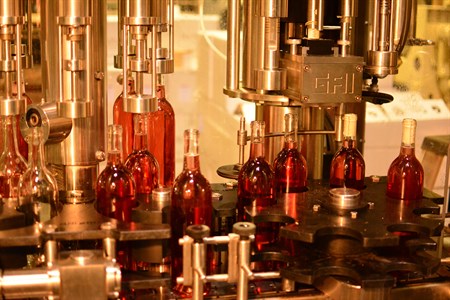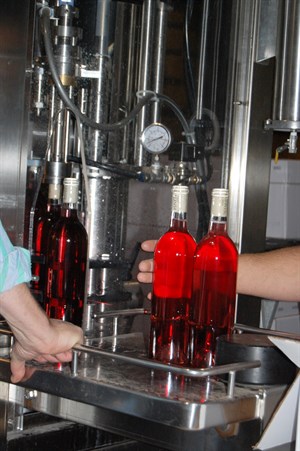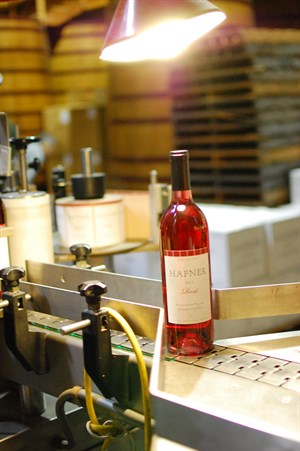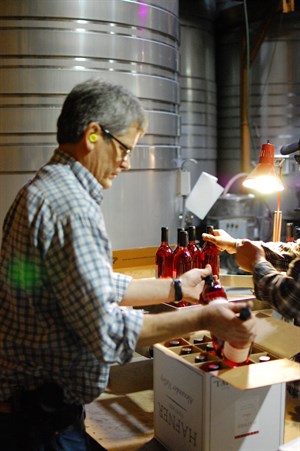Parke, GoPro & Bottling
- February 10, 2015
Bottling is a critical stage of winemaking – wines that are ready to bottle are very fragile and can be easily ruined by microbial contamination or high oxygen pickup (making them age prematurely.) Hence exceptional attention to detail is needed. At Hafner Vineyard, we have always had our own bottling line because I did not want to leave this crucial step in another person’s hands. Bottling also requires coordination of ordering bottling supplies that come from near and far: corks from Portugal, capsules from Spain, bottles and labels from California; if any one of these has a flaw or delay, the bottling schedule must be changed.
My bottling days start an hour and a half before the 3-person crew arrives and the line begins. My primary concern is sterilizing the filler/ corker. This is done with our Hotsy (our portable water heater that boosts the temperature to 210°F.) I run the heated water runs through the filler/ corker for 30 minutes. As the machine cools, I assemble and adjust the rest of the bottling line – filling the corker, capsule spinner and labeler to ensure that we are ready to begin.
Once we begin, sterile bottles are emptied onto the feed table by the first person on the line. They also date stamp and label the cases. The bottles proceed down the conveyer to the sparger where nitrogen gas is blown into the bottles displacing any oxygen. Next, the bottles are filled with wine, just a bit too much, and are then leveled off to an exact fill height. Nitrogen gas pushes the excess wine back into the filler. The bottle then enters the corker; a vacuum is applied to the bottle as the cork is inserted to ensure that there is no pressure inside the bottle. It continues down the conveyer to the capsuler/ labeler where a capsule is spun on and the labels are applied. At the end of the bottling line, two people inspect each bottle as they fill the cases and stack them on a pallet. These three workers rotate jobs (without stopping the line) as each pallet is finished which takes about 25 minutes.
What, you might ask, do I do while the line is running? I make sure that the line runs smoothly – on a good day, I’m replenishing glass, corks, labels, capsules or moving the bottled wine or pulling samples for the lab to analyze. On a bad day, I’m a mechanic adjusting, tweaking, replacing parts, working fervently to get the line running again.
One day during the 2014 Rosé bottling, I wore a GoPro to share what it is like through my eyes. Here is a 90 second clip where I inspect the line, have a small, abnormal bottle backup, the labels run out and quickly replaced as well as a few laughs. Enjoy!
At the end of the day, the bottling line is cleaned, inspected and re-sterilized in preparation for the following day. Pallets of empty glass are moved into position; I calculate how much wine we bottled and how much remains to be bottled; I double-check our supplies and machinery to ensure that all will go well the next day. For me, bottling days are long (11+ hours) and are either eventful because of equipment problems or boring because everything is running smoothly. And boring is just what I want during bottling.







